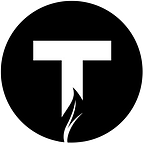One of the clearest realities of this present time is that the world population is on the increase and for sustainability, the production of food has to increase exponentially. According to Food and Agriculture Organization (FAO), there is a projection that food production will have to increase by about 60% in 2050 in order to meet the increasing growing population.
The United Nations have included Food Security as one of their Sustainable Development Goals (SDGs) because of the various challenges that are brought about with the increase in population, which means increase in industrialization, increase in residential land use and a strain competition for agricultural land use.
How then is Remote sensing concerned?
Remote sensing is simply the generation of information about the earth surface, the land, the water bodies and everything it comprises of without coming in direct contact with it. With remote sensing comes the various ways by which agriculture can meet up with the growing population.
The various applications of remote sensing to agriculture are discussed below:
1. CROP MONITORING
Remote sensing is known as one of the best and quickest tools in getting accurate and reliable data over a large quantity of samples. With Remote sensing the agric-tech farmer without visiting the farm can be aware of how good or how bad his farm products are doing at a particular point in time. The remote sensor object can be launched or scanned as a photography images which are called Remote sensing images. The multi-functionality and comprehensive appearance of the information of which the remote sensing images are targeted at makes it a completely advantageous tool for the agri-tech farmer.
2. CROP PRODUCTION FORECASTING
With remote sensing, a farmer can make decisions such as planting a particular crop under a particular condition and will be able to predict the extent of the harvest. Researchers have taken advantage of this breakthrough in technology in forecasting the expected crop production and yield in a particular farmland over a given period.
3. IDENTIFICATION OF CROPS
Some crops can have tendencies of showing irregular characteristics but with remote sensing, the data collected from the remote sensing images can be taken to the labs where the crop culture can be studied.
